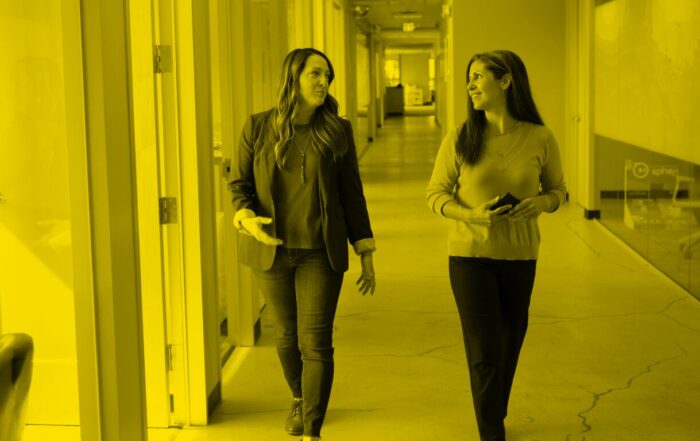Summary
Research prior to COVID-19 has explored how work from home and remote work can help retain women in organizations. Yet, historically employees have faced stigma if they choose to work remotely if the policies are targeted specifically at women and because it is seen as a signal of lower commitment to work. This study conducted prior to the pandemic found that work design may play a role in the uptake of remote work in organizations and has implications for how we think about back to work and work from home during and after we emerge from the pandemic. Through interviews with 84 employees in the IT division of a large financial services firm, this study compared traditional work design (sometimes known as “waterfall” or hierarchical processes) with a new post-bureaucratic work design (the increasingly popular “agile” work) and showed how each can facilitate or hinder the uptake of remote work. It found that agile work design tends to promote working onsite and thus is gender-inegalitarian: more women than men work remotely and a low number of employees work remotely overall. In contrast, waterfall design is associated with working online and with gender-egalitarianism: men and women work remotely in similar numbers and most workers choose to work remotely at least once a week. This study suggests that traditional bureaucratic work practices can in fact provide more flexible work design compared to the post-bureaucratic practices that are meant to be empowering for workers.
Research
Traditional, bureaucratic work design (sometimes known as waterfall work design) includes hierarchical reporting structures, siloed work roles, and decision-making based on authority. In recent decades many organizations have changed work design to a post-bureaucratic form (e.g., agile work design), including flattened hierarchies, decentralization, project-based work, and fluid decision-making. Agile work design, which originated in Silicon Valley, is meant to value individuals and interactions over processes and tools, software over documentation, customer collaboration over contract negotiation, and responding to changes over following a plan. It is intended to provide employees with more autonomy and empowerment.
This study investigated the gendered impacts of these different work designs. Specifically, through interviews with 84 IT employees in a large, multi-national financial services corporation, the author examined how agile and waterfall work practices and team cultures created differences in the uptake of remote work. At the time of this study which occurred shortly before the pandemic, the company was transitioning from waterfall to agile work, so 68% of respondents worked in waterfall while 32% worked in agile. Interviews were semi-structured and included 41 women and 43 men, and 77% were parents.
Findings
Among the respondents in agile work settings, only 22% worked from home at least one day a week, compared to 63% of respondents in waterfall work settings. Interviews revealed that the digital orientation towards work in waterfall settings (e.g., online communication) as opposed to the physical orientation of agile settings (e.g., in-person communication in daily huddles) facilitated the higher uptake of flexible work for those in the traditionally bureaucratic work design.
Work in waterfall settings tended to be computer work with formalized documentation taking place on online systems (e.g., shared databases). Workers also communicated through digital platforms such as video conferencing and email, even when they were in the same office. They could access work and communicate with colleagues anywhere if they had a laptop and smartphone, including at home. Work culture focused on efficiency and results rather than physical presence. Thus, over half of respondents in waterfall work worked remotely at least some part of each week, and there appeared to be a gender-egalitarian use of remote work: similar numbers of men and women worked remotely. However, a trade-off was that waterfall work was managed through digital surveillance: managers and co-workers monitored each other’s activity through online communication platforms and could tell when someone was inactive.
In contrast, agile work processes required a physical orientation towards work. Documentation occurred onsite to facilitate quick changes, e.g., on whiteboards and sticky notes. This meant remote workers could easily miss out on information. In-person communication was also seen as ideal, as employees sat side-by-side and shared ideas constantly. Some agile workers admitted they judged remote workers due to a perceived lack of team dedication. Thus, few worked remotely, and there was a gender-inegalitarian use of remote work policies: more women than men worked remotely even though it was not seen as acceptable, likely because women were more constrained by caregiving responsibilities at home and thus had no choice but to use flexible work policies.
Implications
Organizations should consider how work design can facilitate or hinder the use of remote work policies – Due to its physical orientation, agile work design can hinder remote work uptake. This disadvantages women and caregivers who, because of norms which expect women to be primary caregivers, more often need workplace flexibility. In contrast, the digital orientation of waterfall work design means anyone can work from home without facing penalties. Organizations should consider how their work settings are oriented and how they could better facilitate flexibility for people of all genders, reducing stigma around remote work.
Post-bureaucratic work design does not necessarily result in more flexibility or empowerment for all workers – Post-bureaucratic work design such as agile methodology is becoming popular across many sectors. It is meant to increase employee decision-making and empower them with more autonomy and better communication. However, this study suggests that while these benefits may occur for some workers, those requiring flexibility may experience less autonomy and empowerment if the physical orientation of agile work design creates stigma around working from home.
As we continue pandemic-affected work and eventually emerge from it, organizations should contemplate workplace policies and work design that makes flexible work universally appealing. Any policy or design choice that leads to gendered uptake will inevitably penalize women’s careers. Because gender is a status marker in the world of work where anything gendered female can be seen as lower status, flexible work policies need to be coupled with job design so that new work models are taken up equally by all genders.
________________________
Research brief prepared by:
Title
Remote work and post-bureaucracy: The unintended consequences of work design for gender inequality
Authors
Kim de Laat
Source
ILR Review
Published
Forthcoming







